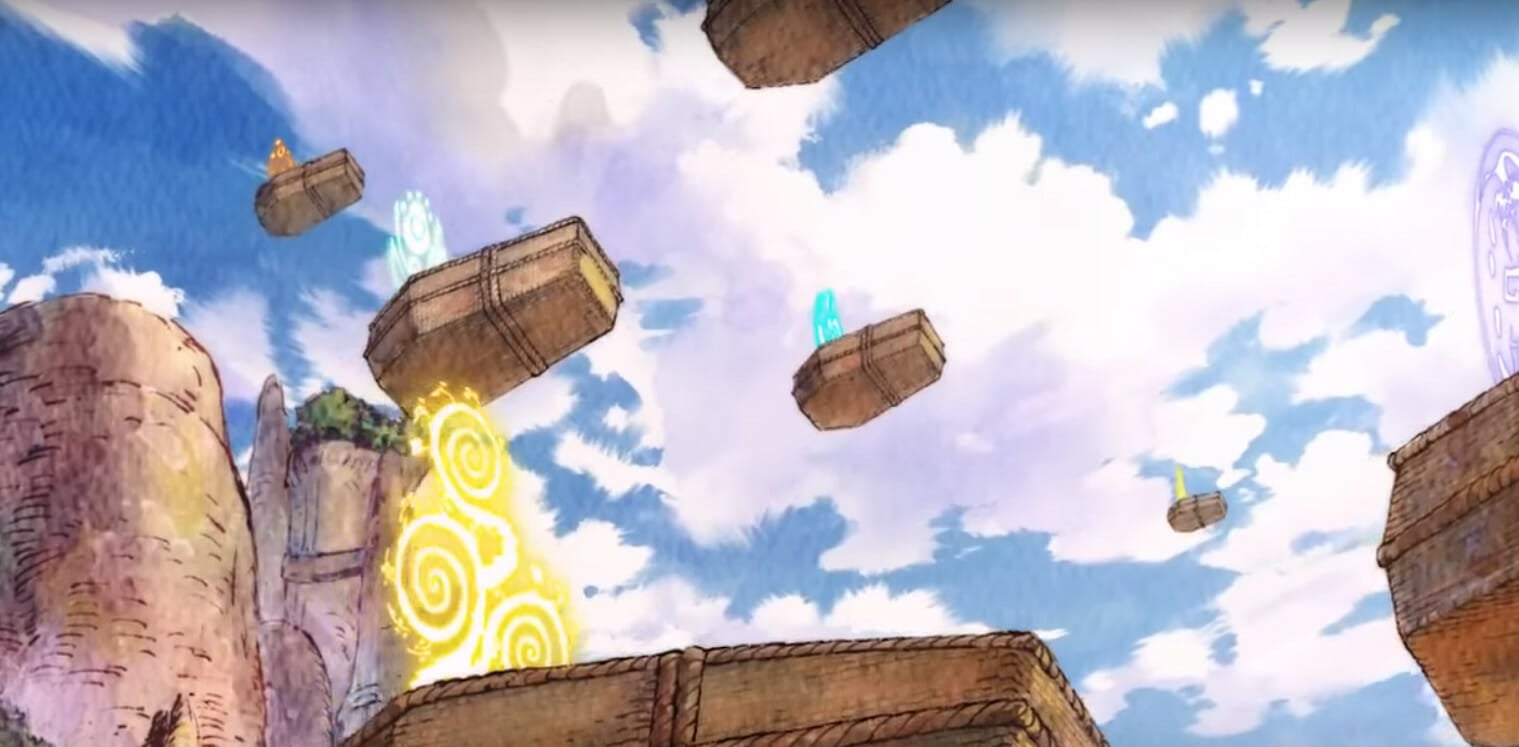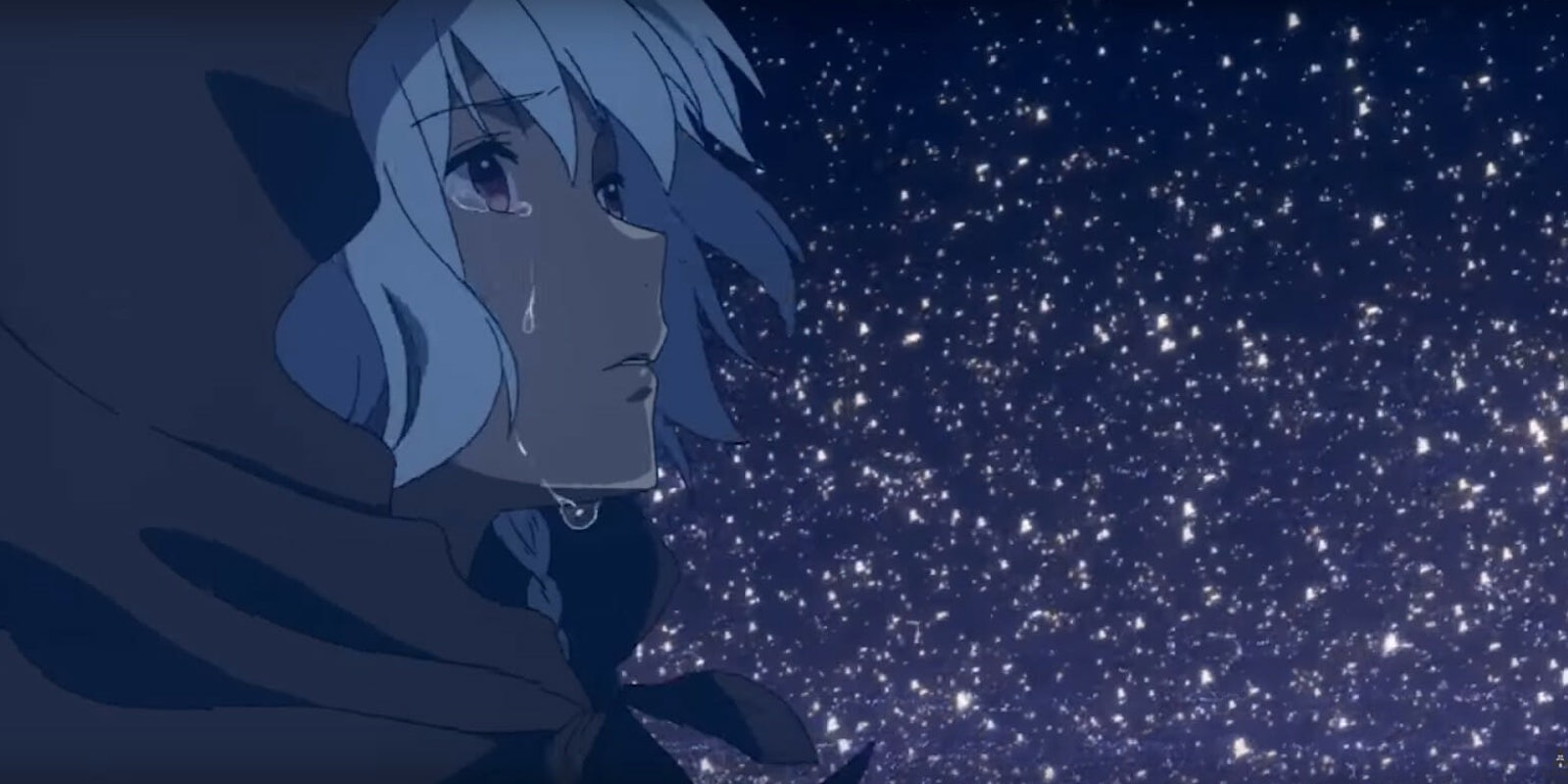Children of the Whales is a master-class in wasted potential. With a fascinating speculative world, truly stunning animation, and a compelling premise, it could have been one of the best fantasy series of the decade. Instead, it’s dry, exposition-heavy, and fails to deliver on any of its early promises.

Children of the Whales tells the story of Chakuro, a young man living on a giant vessel known as the Mud Whale that floats aimlessly through a sea of sand. Chakuro acts as the recorder for the Mud Whale, writing an objective account of the events that take place on it. He is also one of the “marked,” short-lived wielders of a magical power called thymia. The people of the Mud Whale lead peaceful lives, but when a ruined boat holding a young woman chances to drift by, they find that there is a much wider world out there.
There are two sides to speculative fiction: worldbuilding and storytelling. The best speculative fiction blends both seamlessly, with a sense of history and a greater universe surrounding characters informed by the unique circumstances of their world. Worldbuilding without storytelling brings detailed, imaginative worlds populated by cardboard cutouts who spout exposition-heavy dialogue. Storytelling without worldbuilding brings organic conflict and developed characters, but uses stock archetypes and lacks internal consistency. Which one is preferable varies depending on the audience, but without a doubt, Children of the Whales brings worldbuilding but lacks storytelling.
The Mud Whale abounds with mysteries, from why the marked have such short lifespans to why the young woman, who they call Lykos, lacks emotions. Their highly structured society discourages strong displays of emotion—Chakuro is routinely criticized for not sticking to the objective fact in his records—and the leaders are totally opaque to the rest of the population. The system has a whiff of dystopia to it, and some of the most important members of the show’s cast are the young people who chafe under its claustrophobic control.

Even the nature of the Mud Whale itself is an enigma. Unsettling truths lurk just under the surface of their placid existences, and as the plot peels back the layers of obfuscation, the artists and animators bring these mysteries to life with unnerving imagery. The story of Children of the Whales seems to exist mostly to serve these mysteries, rather than the other way around, and even crucial plot events lack much impact. Nothing really has time to land; after each big reveal, the writing barrels forward to the next mystery, making each beat feel weightless, inorganic, and contrived.
The characters feel like little more than an afterthought, and Chakuro, in particular, fails as the story’s protagonist. To create a sense of a populated society, Children of the Whales has a sizable cast, but few ever rise above cardboard cutouts and stock archetypes. Instead, they bloat the whole affair with stiff dialogue and unmoving death scenes that fail to evoke the slightest sense of tragedy or loss.
Chakuro, as an observer, lacks history or motivation as a character. His actions don’t drive or even really affect the plot; he’s supposed to have trouble controlling his emotions, but he sits inert as things happen around him. Characters with stronger motivations and histories surround him—Ouni, a rebellious young man who spends so much time imprisoned underground that he’s called a “mole”; Suou, a compassionate young unmarked man suddenly made mayor in a time of crisis; even Lykos could function as an audience surrogate, since her status as newcomer would make the clunky, overlong exposition come across as more organic and her struggle with the pain of regaining the ability to feel is one of the more interesting arcs the story has to offer. However, even a different protagonist wouldn’t change that their choices and motivations are determined by the plot, rather than the other way around.

Despite all this, the visuals of Children of the Whales almost make it worth watching.
The visual design and animation are truly splendid, some of the best I’ve seen in 20 years as a fan of the medium. The lush world of the Mud Whale, rendered in bright, warm colors, contrasts with the monochromatic desolation of the sea of sand it drifts across and the dark, cool isolation of its underground prisons. Despite the stiffness of the script, expressively rendered body language gives the attractive characters a sense of life. The fantastic elements are particularly striking—thymia etches intricate tattoos across its wielders’ bodies, fish-like organisms leap from the sea of sand, and the mysterious Nous that robbed Lykos of her emotions pulsates like something that should not exist. The music—beautiful and varied but unobtrusive—works alongside the art to enhance the atmosphere.
For some fans of speculative fiction, worldbuilding is enough to make a compelling experience. These are the ones who will get the most out of Children of the Whales, which takes more delight in revealing the world’s mysteries than building the characters who inhabit it. However, without a strong story or character writing, most will find it a chore to watch.
https://www.youtube.com/watch?v=7Jjy65JE6kc
Still not sure what to watch on Netflix? Here are our guides for the absolute best movies on Netflix, must-see Netflix original series and movies, and the comedy specials guaranteed to make you laugh.


